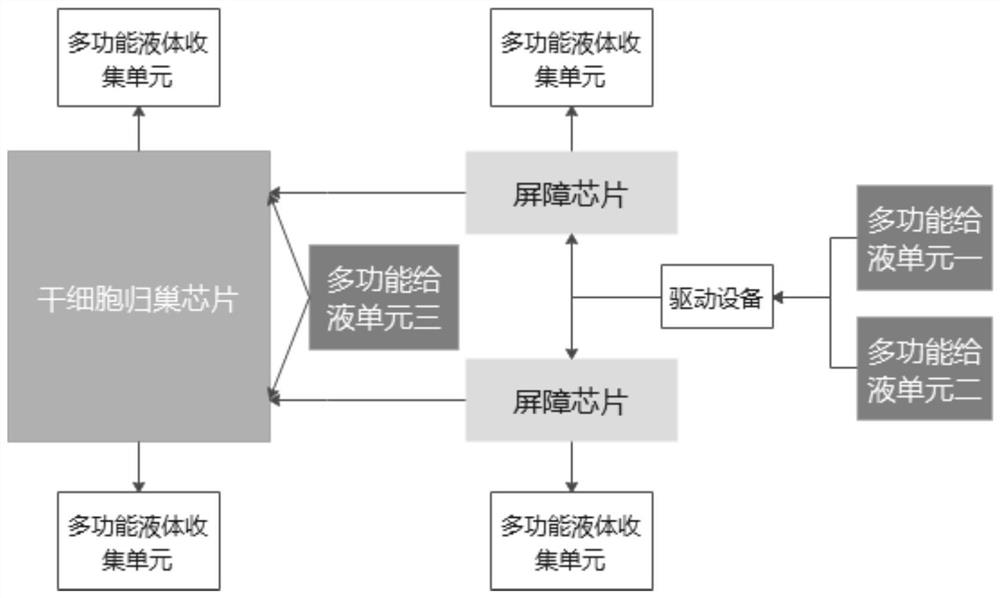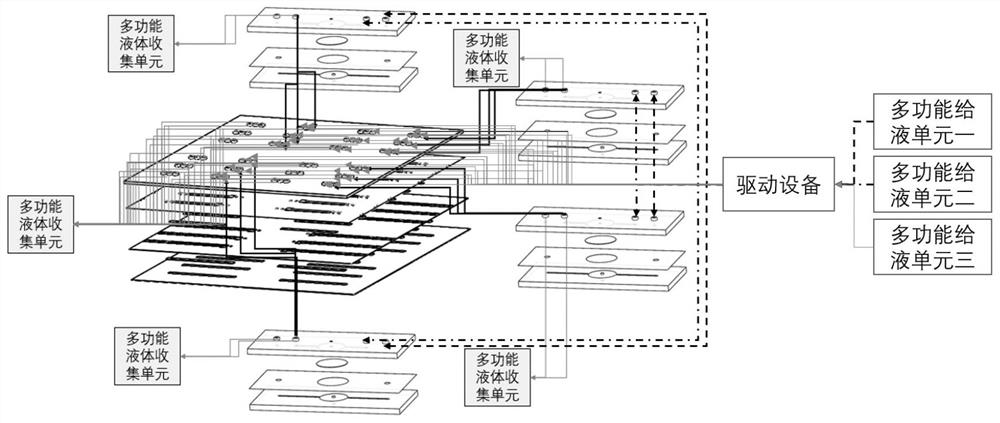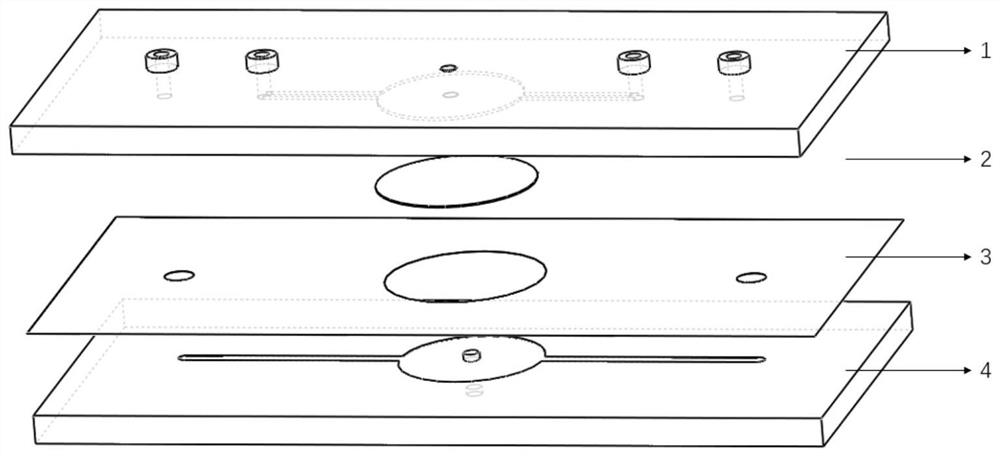Barrier-stem cell homing bionic micro-fluidic chip and application thereof
A microfluidic chip, stem cell technology, applied in tissue cell/virus culture devices, biochemical instruments, biochemical equipment and methods, etc., can solve the problem of ignoring the relationship between organs/tissue-organ barrier and so on
- Summary
- Abstract
- Description
- Claims
- Application Information
AI Technical Summary
Problems solved by technology
Method used
Image
Examples
Embodiment 1
[0037] The invention provides a barrier-stem cell homing bionic microfluidic chip, comprising a barrier chip and a stem cell homing chip. The barrier chip is cultured in layers from the lower layer to the upper layer according to the cell composition sequence of the barrier structure of the target organ. The barrier chip is used to construct the key functional interface of the target organ and realize the complex organ barrier function between cell-cell / tissue / organ-microenvironment.
[0038] The upper chamber of the stem cell homing chip is used for stem cell culture, the middle chamber is embedded in a 3D "nest" formed by the mammalian acellular matrix corresponding to the target organ, and the lower chamber is a perfusion chamber, which is formed by the upper chamber of the barrier chip. The effluent cell culture medium was perfused. The stem cell homing chip is used to simulate the homing of stem cells. Under the action of various factors, the pluripotent stem cells in the...
Embodiment 2
[0044] like image 3 As shown, the barrier chip is separated from the upper chamber and the lower chamber by a porous membrane 2. In this embodiment, the upper chamber is arranged on the back of the interface layer 1, the interface is arranged on the top surface of the interface layer, and the lower chamber is arranged on the base Bottom layer 4 inside.
[0045] The barrier chip is cultured in layers from the lower layer to the upper layer according to the order of cell composition of the barrier structure of the target organ. For example, a blood-brain barrier chip is prepared, cerebral microvascular endothelial cells and cerebral perivascular cells are cultured in the lower chamber, and astrocytes are cultured in the upper chamber.
[0046] The interface layer is provided with a first inlet and a first outlet, which are communicated with the upper chamber, and a second inlet and a second outlet are arranged on the interface layer of the barrier chip, which are communicated ...
Embodiment 3
[0050] like Figure 4 , Figure 5 As shown, the stem cell homing chip is separated from the lower chamber and the middle chamber by a first porous membrane, and the middle chamber and the upper chamber are separated by a second porous membrane, and a third layer is provided on the interface layer of the stem cell homing chip. The inlet and the third outlet are communicated with the lower chamber, and the lower chamber can be perfused separately, and the perfusion fluid is the cell culture fluid or biochemical reagents flowing out from the upper chamber of the barrier chip. The interface layer of the stem cell homing chip is provided with a fourth inlet and a fourth outlet, which are communicated with the middle-layer chamber, and the middle-layer chamber can be perfused separately, and the perfusion liquid can be culture medium or other liquid biochemical reagents. A fifth inlet and a fifth outlet are provided on the interface layer of the stem cell homing chip, and the conne...
PUM
| Property | Measurement | Unit |
|---|---|---|
| Aperture | aaaaa | aaaaa |
| Aperture | aaaaa | aaaaa |
| Aperture | aaaaa | aaaaa |
Abstract
Description
Claims
Application Information
 Login to View More
Login to View More - R&D
- Intellectual Property
- Life Sciences
- Materials
- Tech Scout
- Unparalleled Data Quality
- Higher Quality Content
- 60% Fewer Hallucinations
Browse by: Latest US Patents, China's latest patents, Technical Efficacy Thesaurus, Application Domain, Technology Topic, Popular Technical Reports.
© 2025 PatSnap. All rights reserved.Legal|Privacy policy|Modern Slavery Act Transparency Statement|Sitemap|About US| Contact US: help@patsnap.com



